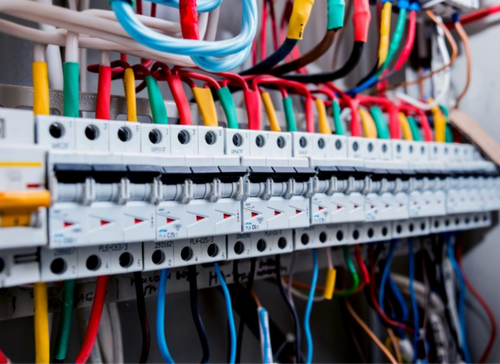Debunking Electric Installment: Understanding Codes and Laws for a Legal and Safe Arrangement
In the realm of electrical installation, adherence to codes and laws is extremely important to ensure both legitimacy and security. The trip to debunking electric setup goes past plain knowledge with policies; it requires an extensive understanding of just how to apply risk-free electric methods effectively.
Value of Electric Codes
The adherence to electrical codes is critical in making sure the safety and integrity of electrical setups. Electrical codes work as a set of requirements and standards that dictate the proper style, installation, and upkeep of electric systems. These codes are developed to minimize the danger of electrical risks, fires, and various other safety and security concerns that might arise from defective electrical work.

Furthermore, electric codes are on a regular basis updated to integrate new modern technologies, finest techniques, and security steps. Staying updated with these codes is necessary for professionals in the electric industry to make certain that their work meets the most up to date security standards. Eventually, the importance of electric codes depends on creating a protected and effective electrical infrastructure that benefits both individuals and communities.
Key Rules for Security
Several essential guidelines regulate the safety and security requirements in electrical installations. One essential law is the National Electrical Code (NEC), which provides standards for secure electrical layout, setup, and inspection to shield people and residential property from electric dangers. The NEC covers aspects such as wiring methods, grounding, overcurrent defense, and devices setup to guarantee a secure electric system.
Another important regulation is the Occupational Safety And Security and Health And Wellness Management (OSHA) standards, which concentrate on the security of employees involved in electric installments (BRE Electrical Solutions). OSHA laws include demands for appropriate training, safety and security procedures, and personal protective tools to avoid work environment crashes and injuries
In Addition, the International Electrotechnical Payment (IEC) criteria aim to harmonize electric setup policies on an international scale. These standards address concerns like electrical equipment safety and security, electro-magnetic compatibility, and power effectiveness to advertise uniformity and safety in electrical installments worldwide.
Compliance with these key laws is necessary to make certain the safety and security and validity of electric installations, safeguarding both people and residential or commercial property from the threats connected with electrical energy.
Understanding National Electric Code
Key guidelines such as the National Electric Code (NEC) offer necessary standards for safe electric layout, installation, and assessment to make sure the defense of people and building from electric risks. The NEC, additionally referred to as NFPA 70, is an extensive collection of standards for electrical setups that are upgraded every three years. It is created by the National Fire Security Organization (NFPA) and is extensively taken on across the United States.
The NEC covers read review numerous elements of electric work, consisting of wiring methods, grounding, overcurrent defense, and devices setup. It intends to safeguard people and residential property by attending to possible dangers connected with electric systems. Compliance with the NEC is usually applied by regional authorities having jurisdiction (AHJs), such as developing code officials and assessors.
Comprehending the NEC is important for electric professionals, developers, and inspectors to ensure that installations fulfill the needed security requirements. By adhering to the NEC standards, specialists can help stop electrical crashes and make sure the reliability of electrical systems in household, commercial, and commercial setups.

Compliance With Neighborhood Building Regulations
Recognizing and adhering to local building codes is important for making certain the safety and security and compliance of electrical installments within a particular jurisdiction. These codes outline specific requirements for electrical setups, such as the type of circuitry to be used, positioning of outlets, basing approaches, and lots capacities.
When it comes to electric installments, failure to abide with neighborhood building regulations can result in major consequences. Non-compliant installations might present safety and security hazards, increase the risk of electric fires, and result in expensive fines or lawful browse around this site problems. In addition, insurance coverage companies may decline to cover problems arising from installments that do not fulfill local structure code needs. For that reason, it is imperative for electrical contractors and specialists to remain notified about and strictly stick to the regional building regulations relevant to their jobs.
Ensuring Safe Electric Practices
Practicing strict adherence to developed safety methods is essential in the area of electric setups to alleviate possible dangers and guarantee the wellness of individuals and properties. Safety and security in electrical work encompasses numerous elements, starting with the appropriate training of employees associated with setup, maintenance, and repair. It is vital to comply with manufacturer directions carefully when taking care of electric components and tools. Before commencing any kind of work, it is necessary to perform an extensive threat assessment to recognize prospective threats and carry out precautionary measures. Making use of individual protective equipment (PPE) such as protected gloves, security glasses, and non-conductive shoes is non-negotiable to safeguard versus electrical shocks and arc flashes. Regular devices inspections, screening, and upkeep routines are important to discover and correct faults prior to they intensify into safety and security dangers. Adherence to proper lockout-tagout procedures during upkeep activities is critical to stop unintended energization of circuits. By focusing on safe practices, electric installations can function successfully while reducing the likelihood of mishaps or damage.
Final Thought
Finally, adherence to electric codes and policies is crucial for making certain the security and legitimacy of electrical installments. Comprehending the National Electric Code and compliance with neighborhood building regulations are necessary for a risk-free setup. By complying with these guidelines and exercising safe electric practices, people can protect against possible pop over to these guys threats and make sure the proper performance of their electric systems.